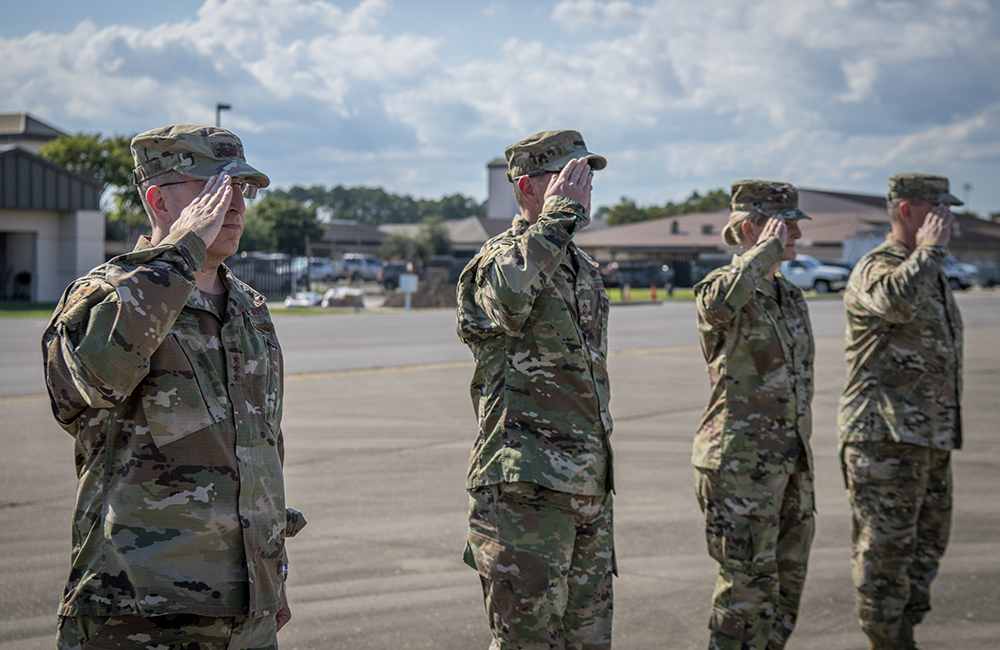SOCOM Looks to Army Futures Command for Network Modernization
As data collection expands at the tactical edge, the service wants commercial cloud capabilities and cloud-based collaboration tools to process data more efficiently.

Shifting to commercial cloud-hosted collaborative tools is helping the Special Operations Command (SOCOM) modernize the network and tactical edge, enabling key decision-makers to respond more quickly in theater.
Col. Joseph Pishock, COO of SOCOM Networks and Services, said during a FedInsider webinar last week that the commercial cloud helps SOCOM process and analyze intelligence, surveillance and reconnaissance (ISR) data more efficiently and effectively.
Pishock said the “old infrastructure” that supported conflicts in Afghanistan and Iraq no longer serves mission needs.
“The data that supports our intelligence platforms, the predator drones, etc., we’ve all got that frame of reference for conflicts in Afghanistan and Iraq,” he said during the webinar. “Over the last 15 to 20 years, an infrastructure emerged to support those assets like a Global Hawk. We found a way to do the storage and analysis and then the services fielded tactical systems, but they’re still big, large, clunky platforms, they were managed in theater.”
Pishock said this data was “heavy in video” and came from location-dependent sensors. But SOCOM wants to glean and process data more quickly and from more sensors in more locations. Instead of collecting data from aerial drones controlled from a base, which isn’t always useful or accurate, SOCOM wants to collect data from handheld drones controlled by warfighters only few feet away.
In other words, Pishock wants to move the network edge closer to the mission.
“Both Army Futures Command and Program [Special Operations Forces] Warrior are in the space of handheld drones that define the next generation of ISR because we don’t have a large national platform,” he said. “The events in Ukraine are extremely informative because we’re seeing in real time handheld drones with cameras … the use of ISR has moved much, much farther forward and it’s being done relatively close to the target. In terms of scale, the work of AFC is a guide to what we can expect for combat formations and we’re seeing previews of that play out right now. Data at the edge is expanding at a rapid scale.”
This strategy allows for higher accuracy to make faster, smarter decisions in theater, but also requires lightning-fast network speeds, which highlights the need for 5G.
“You really only see the most current information to allow you to see where that person or unit is,” Pishock said. “That’s where edge computing is helping. I don’t need to see where the helicopter was five minutes ago because of latency, I need to see where it is now. It’s led to the adoption of more edge devices.”
Pishock unofficially calls this the “tactical mission network … a term we’re using in SOCOM to describe a commercially cloud-hosted collaboration tool,” like an instant messenger app, and it allow partners to collaborate at the edge.
“Our ability to take a tactical mission network would be some kind of, think basic collaboration tools, spin them up in the commercial cloud and deliver them to an endpoint in your hand, most likely a cellphone,” he said.
But this vision comes with cybersecurity challenges, specifically the Defense Department’s tendency to over-classify data, which can block attempts to share key data and information quickly with other military service branches or allies. Even worse, sometimes after running through all the necessary compliance checklists and security and encryption protocols, data from the tactical edge is no longer usable or readable.
“We struggle through concepts like identity management and multiple accounts and instances that may fly in the face of a well-designed product that might not understand that there are four or five instances of Joe Pishock, well, welcome to the Department of Defense,” Pishock said. “They wind up adding different levels of complexity in DOD networks — that’s a level we contend with, and in most cases it’s not there because of the best reason it may be there because of a policy or a cybersecurity regulations. So the product has to be modified to operate in this environment, which places demands on how you run your services and, of course, the transport.”
Pishock believes SOCOM’s network modernization effort to serve the tactical edge requires collaboration and data sharing to be a success, which will also ultimately require help from commercial cloud capabilities.
“The edge computing environment is not going to be something that gets solved because of a great DOD top-down idea,” he said. “It will be harnessed because of a bottom-up effort. I think if you don’t have an end-to-end commercial cloud or data sanctuary some place, you can’t really enable what you need all the way out there on the edge.”
This is a carousel with manually rotating slides. Use Next and Previous buttons to navigate or jump to a slide with the slide dots
-

Energy Researchers Aim For Holistic Approach to AI Issues
A new center at the Oak Ridge National Laboratory is looking at under-researched areas of AI to better understand how to secure it.
2m read -

How Agencies are Upskilling the Workforce in AI
Federal officials are putting in place new training and education methods to ensure its overall workforce understands the technology.
3m read -

Building Better Data Governance Across FDA
The agency is using emerging technology to tackle its data challenges.
19m listen -

A Prepared Workforce is Key to Cyber Resiliency
Strong training strategies and emphasizing cyber hygiene basics enhance security practices at federal agencies.
2m read




